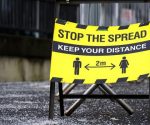“Covid-19 Vaccine” Adverse Reactions; Part Four: A tendency to be more injurious than expected
This is the latest instalment tracking MHRA Yellow Card report data, with a little reformatting of tables, to be found at the foot of the page, for clearer inspection. The trend discovered in the tracking is also here discussed.
According to the official account, there is no causal link between adverse reaction that isn’t an expected mild and temporary side effect, and the administration of the Pfizer and AstraZeneca: any incidence of “unexpected”, or serious adverse condition after the jab is said to be a coincidence.
So, to use a number of examples for easier thinking about what this entails – and remember the author is not an expert in mathematical probability, and in any case would approach this in a simplistic way for the sake of better communication – the official account would say that, in this situation, the relationship between an action (the giving of the “vaccine”) that appears to bring on an outcome (the adverse reaction) is not like rolling a die so many times and expecting a certain amount of a particular number to occur, or drawing so many playing cards and expecting to reveal a particular card. In this scenario, or so claims the Church of allopathic medicine, the relationship would be the same as one between the action of rolling a die, and the outcome of a painting falling off the wall. In other words, there would be no relationship. And, in this scenario of nil correlation between often-happening action, and rarely-occurring event, as the number of actions increases, the apparent relationship between action and event should dilute, or weaken. This is an all important point to grasp.
In fact, from the approach we are taking it can be seen that differentiating between types of adverse reaction is actually about applying a mode of denial so that there can’t be a correlation to talk about. On the other hand, if one asserts that there is no such thing as a non-serious adverse reaction [see the previous part of this series where this assertion is justified], then the reality of a connection is unavoidable, as we shall see.
While officially the “Covid-19 vaccine” does not cause unexpected conditions, there is official acknowledgement that some adverse reactions from the Pfizer and AstraZeneca vaccine products will be related to their administration, and these are the expected mild and temporary side effects. As it happens, the MHRA claims that these adverse reactions, as they are appearing in the Yellow Card reporting, are much less frequent than expected levels as established in clinical trials, but in fact it’s not a sound benchmark to use, nor useful comparison to make, for the simple reason that, in the real world, unlike laboratory conditions, not all vaccine product recipients will report an adverse reaction if they suffer one (not to mention the much smaller sample groups in the trials). On the other hand, realistic expectation was established on the first publication of MHRA data – as covered here at FBEL, after which there has been examination of subsequently released data to see if new results live up to that expectation – and we’ll deal momentarily with the observations that can be made about this.
Getting back to the relationship between mild reactions and administration of the vaccine products, while it’s not exactly the same, this is a relativity more like when a die is rolled so many times to produce an expected number of occurrences of an outcome involving a particular face of the die. The MHRA says that from the clinical trials, there would be an expectation to see one adverse reaction in every ten doses.
As has been said, this cannot be a helpful real world benchmark, and so instead we can form expectation from a first batch of doses. After that, what we would expect to see, in a way that resembles the die roll analogy, are results that match expectation (i.e. a steady relationship denoted by a stable ratio).
If in these circumstances the outcome became more likely to occur as the number of batches of actions was performed (in this case, the number of doses given in a period up to a cut-off date), then we could suspect something in the process biasing the outcome; so, for instance, an additional ace, substituted into a pack before each new experiment, where the test was to see how many cards had to be drawn before coming across an ace card, would create more expectation of a higher frequency of an ace being drawn early on, and also the same outcome in practice.
From the tables below it can be seen that the percentage of vaccine product administered where there is an adverse reaction tends to increase from one batch of actions to the next, and generally increases across the whole lifetime of product administration. In other words, there is more likelihood of adverse reaction as vaccine product administration increases. Or, there is a tendency for the product to be more injurious than expected, on a repeating basis. This could indicate a problem of the sort described above, although we are not to have that investigation here†. Instead, we will only observe that the least that can be said about the phenomenon is that it does denote a connection between the action and the outcome, for all the reasons here given.
Of course, one could argue that there is no differentiation made in the tables regarding degrees of reaction: i.e. the difference between non-serious and serious. Actually, this is the mode of perspective, as mentioned before, that is put in place to deny the correlation. On the other hand, if one takes the view that there is actually no non-serious sort of adverse reaction, and that all are at least symptomatic of deeper damage that is not detected and not even sought for, because of allopathic arrogance, then we can assert the connection.
The following two tables, one for the Pfizer product and the other for the AstraZeneca product, show the percentage of administered first doses that produced Yellow Card reports and individual suspected adverse reactions (there can be more than one of these per report) up to certain dates [the figures for doses, reports and reactions are cumulative, the % is for the relationship between reports and doses, and reactions and doses, to the specified date]. They also show, for reports and reactions separately, the change in the percentage from the date of one record to the next, and also the accumulated change.
Previously in this series:
“Covid-19 Vaccine” Adverse Reactions; Part Three: more AstraZeneca equals more damage – (link)
| Pfizer – From 9.12.20 | |||||||||
| Date to | 1st doses (million) | Reports | % | % change | Acc % change | Reactions | % | % change | Acc % change |
| 24.1.21 | 5.4 | 16,756 | 0.310 | 49,472 | 0.916 | ||||
| 14.2.21 | 8.3 | 26,823 | 0.323 | +0.013 | +0.013 | 77,207 | 0.930 | +0.014 | +0.014 |
| 21.2.21 | 9.4 | 29,715 | 0.316 | -0.007 | +0.006 | 85014 | 0.904 | -0.026 | -0.012 |
| 28.2.21 | 10.7 | 33,207 | 0.310 | -0.006 | – | 94,809 | 0.886 | -0.018 | -0.030 |
| 7.3.21 | 10.9 | 35,325 | 0.324 | +0.014 | +0.014 | 100,810 | 0.925 | +0.039 | +0.009 |
| 14.3.21 | 10.9 | 38,084 | 0.349 | +0.025 | +0.039 | 108,649 | 0.997 | +0.072 | +0.081 |
| AstraZeneca – From 4.1.21 | |||||||||
| Date to | 1st doses (million) | Reports | % | % change | Acc % change | Reactions | % | % change | Acc % change |
| 24.1.21 | 1.5 | 6,014 | 0.401 | 21,032 | 1.402 | ||||
| 14.2.21 | 6.9 | 31,427 | 0.455 | +0.054 | +0.054 | 114, 625 | 1.661 | +0.259 | +0.259 |
| 21.2.21 | 8.4 | 42,917 | 0.511 | +0.056 | +0.110 | 157,637 | 1.877 | +0.216 | +0.475 |
| 28.2.21 | 9.7 | 54,180 | 0.559 | +0.048 | +0.158 | 201,622 | 2.079 | +0.202 | +0.677 |
| 7.3.21 | 11.7 | 61,304 | 0.524 | -0.035 | +0.123 | 228,337 | 1.952 | -0.127 | +0.550 |
| 14.3.21 | 13.7 | 78,223 | 0.571 | +0.047 | +0.170 | 294,820 | 2.152 | +0.200 | +0.750 |
The following table shows the percentage of all first and second doses that produced Yellow Card reports and individual suspected adverse reactions, and the same type of percentage changes as described above.
The point of this table is to deal with the fact that the MHRA reports don’t indicate the exact number of second doses for either product, and this is why they are not accounted for in the first two tables, which suppose that the number of second doses is negligible enough that all reports and reactions can be treated as aspects of the first doses. However, because it is entirely likely that some Yellow Card reporting will come from 2nd doses, there has to be some accounting for them. In the end, the same tale of increasing percentages is told.
| % across all doses, Pfizer and AstraZeneca | |||||||||
| Date to | 1st doses (million) | 2nd doses (million) | Total doses | Reports | % | % change | Reactions | % | % change |
| 24.1.21 | 6.9 | 0.5 | 7.4 | 22,770 | 0.308 | 70,504 | 0.953 | ||
| 14.2.21 | 15.2 | 0.6 | 15.8 | 58,250 | 0.369 | +0.061 | 191,832 | 1.214 | +0.261 |
| 21.2.21 | 17.8 | 0.6 | 18.4 | 72,632 | 0.395 | +0.026 | 242,651 | 1.319 | +0.105 |
| 28.2.21 | 20.4 | 0.8 | 21.2 | 87,387 | 0.412 | +0.017 | 296,431 | 1.398 | +0.079 |
| 7.3.21 | 22.6 | 1 | 23.6 | 96,629 | 0.409 | -0.003 | 329,147 | 1.395 | -0.003 |
| 14.3.21 | 24.6 | 1.3 | 25.9 | 116,307 | 0.449 | +0.040 | 403,469 | 1.558 | +0.163 |
† Assuming a set of recipients who could report a reaction do so, one explanation could be that the more thorough a net of distribution becomes, the more it discovers predisposition to adverse reaction (which, if it’s from pre-existing reliance on prescription drugs, for instance, doesn’t automatically mean vulnerability through agedness as might be assumed). Maybe another factor is delayed reporting, with symptoms emerging at a later date after receipt of a jab, or remaining after immediate appearance, and not being temporary after all.


















